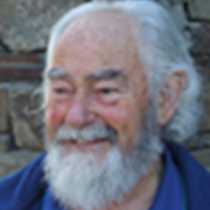Clarkston, Washington
This has been a day of adventure for us as we travel on the Sea Birdin the “Wake of Lewis and Clark”. Some of us went by jet boat upstream on the Snake River into Hell’s Canyon. Here we saw Rocky Mountain bighorn sheep as well as great blue herons and other wildlife, and the jetboat captain told us of earlier, wilder times on the river. We saw evidence of some of the earlier visitors to Hell’s Canyon: gold miners, boatmen, and the earliest of all. Indians at Buffalo Crossing had carved petroglyphs into the rocks, leaving evidence of their travels.
The other contingent of Sea Bird’s guests traveled by motor coach up the Clearwater River, tracing the route of the Corps of Discovery on their magnificent adventure. We stood on the very places where Lewis and Clark had been some two hundred years before. We read from the journals the words they had written in those places, and we listened as Lin Laughy told us stories of their travels. He also recounted the story of the Nez Perce people who lived along the banks of the river.
And then as a study in realism, we participated with our instructor, Lee Hamilton, in learning several primitive skills. One of these was building a fire by friction between two pieces of wood deftly rubbed together. As the product of these efforts burst into flame, they were greeted with enthusiastic applause by the rest of our group. Sometimes we take for granted the simpler things in life, but after learning a bit about daily living skills of the Nez Perce when Lewis and Clark enjoyed their hospitality, we have renewed respect for their way of life.
This has been a day of adventure for us as we travel on the Sea Birdin the “Wake of Lewis and Clark”. Some of us went by jet boat upstream on the Snake River into Hell’s Canyon. Here we saw Rocky Mountain bighorn sheep as well as great blue herons and other wildlife, and the jetboat captain told us of earlier, wilder times on the river. We saw evidence of some of the earlier visitors to Hell’s Canyon: gold miners, boatmen, and the earliest of all. Indians at Buffalo Crossing had carved petroglyphs into the rocks, leaving evidence of their travels.
The other contingent of Sea Bird’s guests traveled by motor coach up the Clearwater River, tracing the route of the Corps of Discovery on their magnificent adventure. We stood on the very places where Lewis and Clark had been some two hundred years before. We read from the journals the words they had written in those places, and we listened as Lin Laughy told us stories of their travels. He also recounted the story of the Nez Perce people who lived along the banks of the river.
And then as a study in realism, we participated with our instructor, Lee Hamilton, in learning several primitive skills. One of these was building a fire by friction between two pieces of wood deftly rubbed together. As the product of these efforts burst into flame, they were greeted with enthusiastic applause by the rest of our group. Sometimes we take for granted the simpler things in life, but after learning a bit about daily living skills of the Nez Perce when Lewis and Clark enjoyed their hospitality, we have renewed respect for their way of life.




